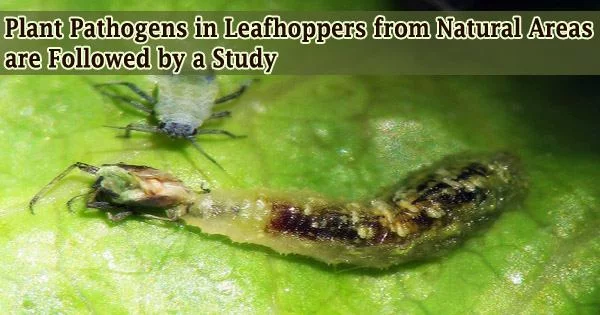Bacteria called phytoplasmas can enter the vascular tissues of plants and cause a variety of agricultural illnesses. A new investigation focuses on the microscopic insects that spread the contagious bacteria from plant to plant, as opposed to the majority of phytoplasma research that start by examining plants that exhibit illness signs.
The study uncovered new links between leafhoppers and phytoplasmas known to affect crop plants by identifying new phytoplasma strains and evaluating DNA from archival leafhopper specimens obtained in natural regions.
The research, conducted by INHS State Entomologist Christopher Dietrich and postdoctoral researcher Valeria Trivellone, was published in the journal Biology and is the first to look for phytoplasmas in insects from natural regions. It is also the first to detect and characterize phytoplasmas in leafhoppers using a range of molecular methods.
“We compared traditional molecular techniques with next-generation sequencing approaches, and we found that the newer techniques outperformed the traditional ones,” Trivellone said.
“These methods will allow researchers to target more regions of the phytoplasma genomes to get a clearer picture of the different bacterial strains and how they damage plants,” she said.
“One thing that is really novel about this study is that we’ve focused on the vectors of disease, on the leafhoppers, and not on the plants,” Dietrich said.
“The standard approach of looking for phytoplasmas in plants is much more labor-intensive, requiring that scientists extract the DNA from a plant that appears to be diseased and checking for phytoplasmas,” he said.
“But even when you identify the phytoplasma, you don’t know what leafhopper or other vector transmitted it to the plant,” Dietrich said. “So researchers must go back out into the field to collect all potential insect vectors. Then they do transmission experiments, where they let the leafhoppers feed on an infected plant and then put them on an uninfected plant to see if it catches the disease.”
One thing that is really novel about this study is that we’ve focused on the vectors of disease, on the leafhoppers, and not on the plants. The standard approach of looking for phytoplasmas in plants is much more labor-intensive, requiring that scientists extract the DNA from a plant that appears to be diseased and checking for phytoplasmas.
Christopher Dietrich
Because this research is laborious and slow, “we still don’t have a good idea of which insects are spreading most phytoplasmas between plants,” Dietrich said. “That really limits your ability to set up an effective management strategy.”
The researchers used leafhopper specimens from the INHS insect collection for the latest investigation. In order to classify these insects’ genetic relatedness and evolutionary history, Dietrich had gathered numerous of them over a 25-year period.
The researchers looked at 407 different kinds of leafhoppers that were gathered in less developed parts of the world. The samples come from Australia, Africa, Asia, Europe, North and South America, and Africa.
The scientists used both conventional and cutting-edge sequencing techniques to process each material, extracting the entire DNA from each. According to the researchers, the latter are less expensive and more educational than conventional approaches.
23 leafhoppers provided the researchers with useful phytoplasma sequence data, and 41 of the insects collected during the sampling tested positively for phytoplasmas. The aster yellows disease, which prevents photosynthesis and lowers the production of numerous crop plants, is one of the phytoplasmas. Numerous new species of leafhoppers that had not previously been recognized as disease vectors were revealed to carry these phytoplasmas.
“These leafhoppers may transmit the phytoplasmas to wild plants in natural areas,” Trivellone said.
The investigation discovered phytoplasmas in parts of the world where such illnesses had not previously been recorded and discovered numerous novel bacterial strains. Additionally, it discovered never-before-reported connections between particular phytoplasmas and specific species of leafhopper.
Because scientists lack the skills to specifically target the bacteria in asymptomatic plants to stop disease outbreaks, phytoplasmas must be controlled by using pesticides to eradicate the insect vectors.
“Because the insecticides are only partially specific to the target insects, they kill a variety of beneficial insects as well, which is not sustainable,” Trivellone said.
“We’re finding that there are lots of new phytoplasmas out there in nature that nobody’s ever seen before,” Dietrich said. “They don’t cause disease symptoms in the native plants they’ve associated with for maybe millions of years. They only start causing disease when they jump to a new host that has not been exposed to the phytoplasma before.”
The new findings parallel those seen in emerging infectious diseases of humans originating in wildlife, Dietrich said. “This is why we need to look more broadly across nature and see what’s out there.”
The National Science Foundation supports this research. The INHS is a division of the Prairie Research Institute at the University of Illinois Urbana-Champaign.
















